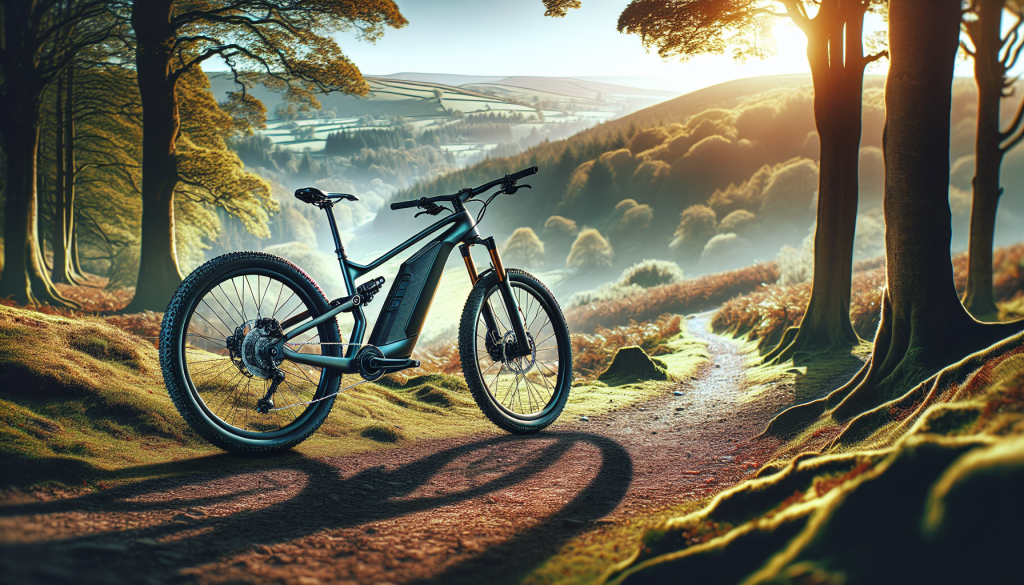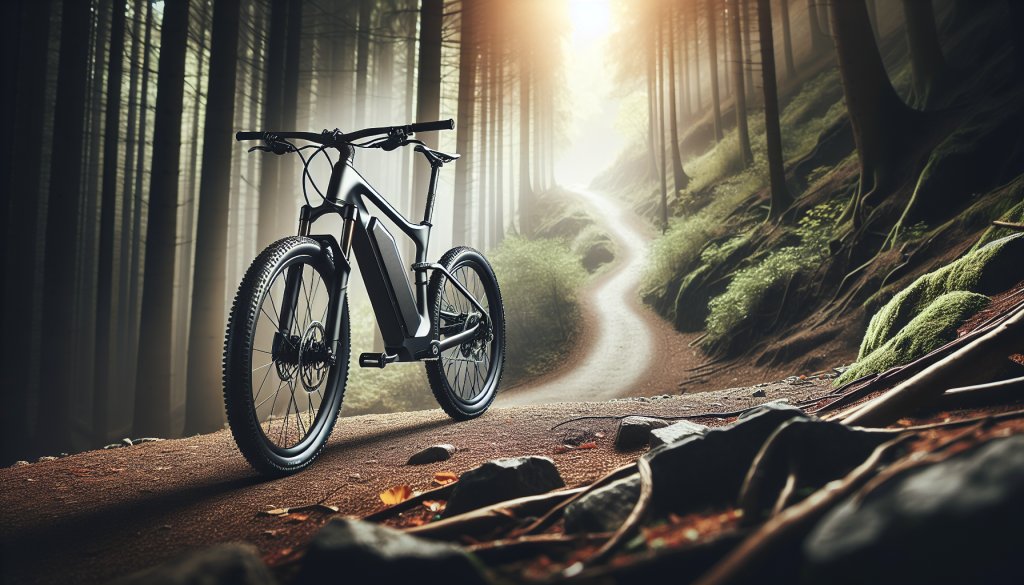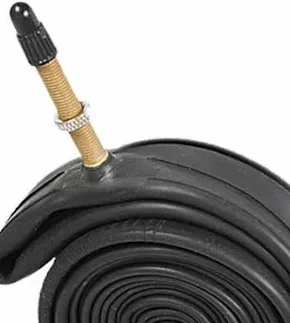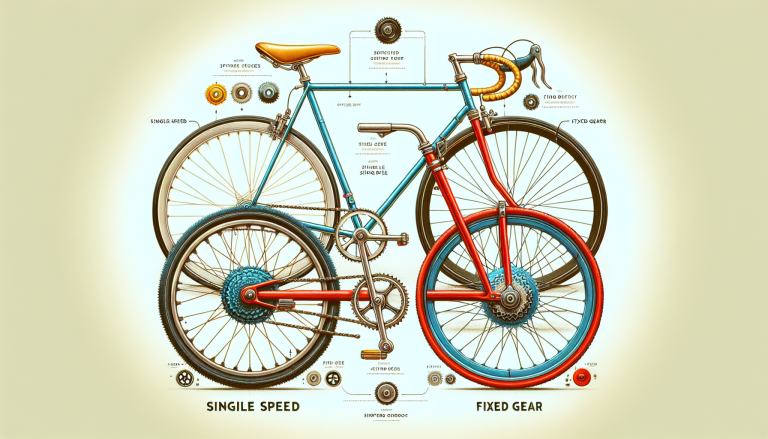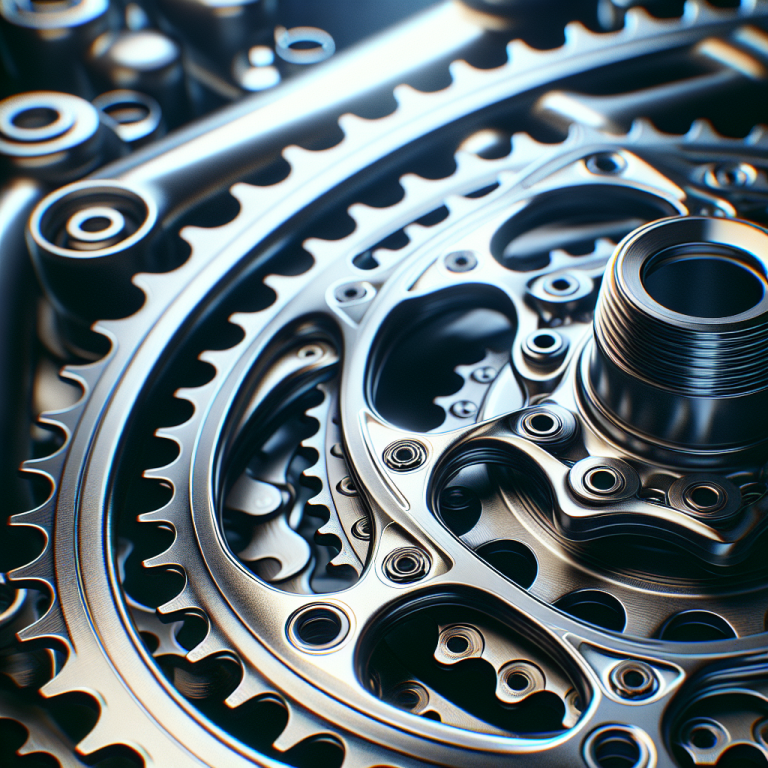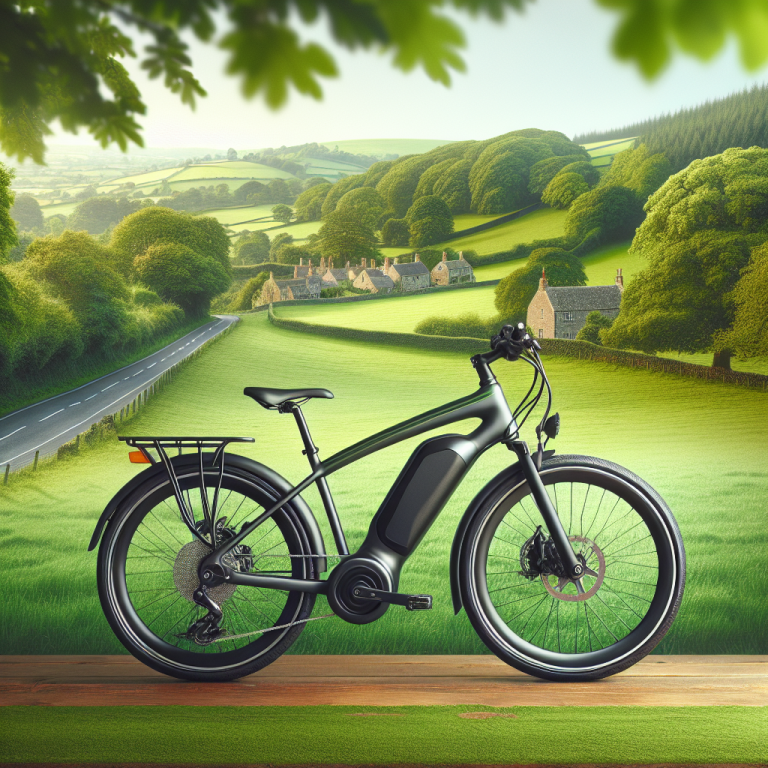Have you ever wondered how electric MTB bikes work in the UK? These innovative machines have revolutionized the way people get around, offering a thrilling and eco-friendly alternative to traditional mountain biking. But how exactly do they work? In the UK, electric MTB bikes utilize a combination of a powerful electric motor and rechargeable battery to augment the rider’s pedaling power. As you pedal, the motor seamlessly kicks in, providing an extra boost to your speed and helping you conquer challenging terrains with ease. Excitingly, these bikes also come equipped with different levels of assist, allowing you to tailor your riding experience to your preference. So hop on an electric MTB and discover the exhilarating world of off-road biking like never before.
Table of Contents
ToggleElectric MTB Bikes
Electric MTB bikes, also known as electric mountain bikes, have gained significant popularity in recent years. These bikes combine the thrilling experience of mountain biking with the assistance of an electric motor, providing riders with a unique and exciting way to explore off-road trails. In this article, we will dive deeper into the various components and features of electric MTB bikes, discussing their advantages and the legal considerations in the UK.
Overview of Electric MTB Bikes
Electric MTB bikes are designed to enhance the riding experience by integrating an electric motor and battery into a traditional mountain bike frame. These bikes allow riders to conquer challenging terrains with ease, thanks to the additional power provided by the electric motor. With electric MTB bikes, you can easily climb steep hills, cover long distances, and maintain a consistent speed, allowing you to explore more trails and push your boundaries.
Components of Electric MTB Bikes
Electric MTB bikes consist of several key components that work together to provide a seamless riding experience. The main components include the electric motor, battery, pedal assist system (PAS), throttle control, drive train, braking system, suspension system, and frame design. Each component plays a crucial role in the overall performance and functionality of the bike, ensuring a smooth and enjoyable ride in various terrains and conditions.
Types of Electric MTB Bikes
There are several types of electric MTB bikes available in the market, each catering to different riding styles and preferences. Hardtail electric MTB bikes feature a suspension fork in the front, providing some suspension travel to absorb shocks and bumps on the trails. Full suspension electric MTB bikes, on the other hand, feature both front and rear suspension, offering even better shock absorption and enhanced comfort.
Advantages of Electric MTB Bikes
Electric MTB bikes offer numerous advantages over traditional mountain bikes, making them a popular choice among outdoor enthusiasts. One of the primary benefits is the assistance provided by the electric motor, which helps riders tackle challenging terrains more easily. Whether it’s steep inclines or long distances, the electric motor ensures a consistent and effortless riding experience. Electric MTB bikes also allow riders to cover more ground in a shorter amount of time, expanding the possibilities for exploration.
Electric Motor
The electric motor is the powerhouse of electric MTB bikes, providing the extra boost needed to conquer demanding trails. The motor assists the rider by amplifying their pedaling power, ultimately increasing the bike’s speed and performance. There are different types of electric motors used in MTB bikes, including hub motors and mid-drive motors, each offering unique characteristics and advantages.
Purpose of Electric Motor
The electric motor in an electric MTB bike serves the purpose of assisting the rider during their pedaling efforts. It amplifies the power generated by the rider, allowing them to conquer challenging terrains without exerting as much physical effort. The motor ensures a smoother and more efficient ride, especially when tackling steep hills or long distances.
Types of Electric Motors in MTB Bikes
The two main types of electric motors used in MTB bikes are hub motors and mid-drive motors. Hub motors are located either in the front or rear wheel, providing direct power to the wheel itself. These motors offer simplicity and ease of use, making them ideal for riders who prefer a straightforward and user-friendly setup. Mid-drive motors, on the other hand, are located near the bike’s bottom bracket, directly driving the crankset. This positioning allows for a better distribution of weight and a more natural riding experience.
Power Output of Electric Motors
The power output of electric motors in MTB bikes varies depending on the model and specifications. Typically, electric motors are classified by their wattage, with common power outputs ranging from 250W to 750W. Lower wattage motors are ideal for riders who prefer a more subtle boost, while higher wattage motors provide greater assistance for tackling more demanding trails. It’s important to consider the intended use and terrain when choosing an electric MTB bike with the appropriate motor power.
Battery
The battery is a crucial component of electric MTB bikes, as it stores the energy required to power the electric motor. The battery capacity directly affects the bike’s range, determining how far you can ride before recharging becomes necessary. Understanding the importance of the battery, its capacity, and the charging process is essential for maximizing the performance and longevity of your electric MTB bike.
Importance of Battery in Electric MTB Bikes
The battery is the primary source of power for the electric motor in an electric MTB bike. It provides the energy needed to assist the rider and ensure a smooth and uninterrupted ride. The capacity and quality of the battery directly impact the bike’s performance, with higher-capacity batteries offering extended range and more consistent power delivery.
Battery Capacity and Range
Battery capacity is measured in watt-hours (Wh) and determines how much energy the battery can store. Higher capacity batteries generally provide a longer range, allowing riders to cover more distance before recharging. It’s important to consider your riding requirements and the expected terrain when choosing the battery capacity for your electric MTB bike. Remember that external factors such as terrain, riding style, and overall weight can affect the actual range achieved.
Battery Charging and Recharging
Charging and recharging the battery is a straightforward process that can be done at home or with external charging stations. Most electric MTB bikes come with a removable battery, allowing you to conveniently recharge it without having to bring the entire bike inside. The charging time can vary depending on the capacity of the battery and the charging system used. It’s recommended to use the manufacturer’s recommended charging equipment to ensure optimal performance and safety.
Pedal Assist System
The pedal assist system (PAS) is a key feature in electric MTB bikes, as it determines how the electric motor responds to the rider’s pedaling efforts. The PAS ensures a seamless integration of human power and electric assistance, providing a natural and intuitive riding experience. Understanding the working principle, modes, and control of the PAS is crucial for harnessing the full potential of an electric MTB bike.
Working Principle of Pedal Assist System (PAS)
The pedal assist system works by detecting the rider’s pedaling motion and then activating the electric motor to provide assistance. When the rider starts pedaling, sensors in the PAS detect the motion and, based on the selected mode, adjust the power output of the electric motor accordingly. This system ensures that the rider’s effort is augmented, offering a smooth and efficient ride.
PAS Modes and Control
Electric MTB bikes typically come with multiple PAS modes that allow riders to customize their riding experience. The modes usually range from eco or low assistance to high or turbo assistance, with various levels in between. Riders can select the desired mode based on their fitness level, the terrain, or simply their preference for more or less electric assistance. PAS control is usually located on the handlebars, allowing riders to easily switch between modes while on the go.
Integrating PAS with Electric Motor
The integration of the pedal assist system with the electric motor ensures a seamless and responsive riding experience. The PAS works in harmony with the rider’s pedaling motion, activating the electric motor at the right moments to provide the necessary assistance. This integration allows for a more efficient use of the battery’s energy, maximizing the range and overall performance of the electric MTB bike.
Throttle Control
Throttle control is an alternative to the pedal assist system, allowing riders to control the electric motor independently. While some electric MTB bikes solely rely on the PAS, others feature throttle control as an additional option for riders who prefer a more hands-on approach. Understanding the role of throttle control, the types of throttles used, and how to operate and control them is important for riders considering this feature.
Role of Throttle Control in Electric MTB Bikes
Throttle control provides riders with the ability to control the electric motor independently of their pedaling efforts. With throttle control, riders have direct control over the speed and power output of the motor, allowing for more precise maneuvering and instant acceleration when needed. This feature is especially useful in situations where pedaling might not be ideal, such as technical climbs or when starting from a standstill.
Types of Throttles Used in MTB Bikes
There are various types of throttles used in electric MTB bikes, each offering a different method of control. Twist throttles, which resemble motorcycle throttles, allow riders to adjust the speed by twisting the grip on the handlebar. Thumb throttles, on the other hand, are operated by pressing a button or lever with the thumb. Both types of throttles provide intuitive and convenient control over the electric motor’s power output.
Throttle Operation and Control
Operating and controlling the throttle is simple and user-friendly. When using the throttle control, riders can activate the motor by simply twisting or pressing the throttle, depending on the type. The more the throttle is twisted or pressed, the more power will be delivered to the electric motor, resulting in increased speed and performance. Releasing the throttle will gradually decrease the power output and bring the bike to a controlled stop.
Drive Train
The drive train of an electric MTB bike consists of the components responsible for transferring power from the rider to the wheels. Understanding the drive train, the gearing system, and their impact on the bike’s performance is vital for optimizing your riding experience and tackling different terrains with ease.
Understanding Drive Train in Electric MTB Bikes
The drive train in electric MTB bikes consists of the crankset, chain, rear cassette, and derailleur. When the rider pedals, the power is transferred through the crankset, which is connected to the chain. The chain then engages with the rear cassette, which houses multiple gears, allowing the rider to adjust the gear ratio based on the terrain and riding conditions. The derailleur is responsible for moving the chain between different gears.
Gearing System in MTB Bikes
The gearing system in electric MTB bikes plays a crucial role in determining the bike’s performance in various situations. Lower gears provide easier pedaling at slower speeds, making them ideal for climbing steep inclines or navigating technical sections. Higher gears, on the other hand, offer more resistance but allow for higher speeds, suitable for flat surfaces or downhill sections. Having multiple gears ensures riders can adjust their pedaling effort to match the terrain and their desired speed.
Impacts of Drive Train on Performance
The drive train directly impacts the bike’s performance, affecting its agility, speed, and efficiency. The choice of gears can significantly influence how the bike handles different terrains. Selecting the appropriate gear ratio allows riders to maintain a comfortable cadence, optimize power transfer, and overcome various challenges effortlessly. Understanding the relationship between the drive train, motor assistance, and your own pedaling efforts is key to maximizing the bike’s performance.
Braking System
The braking system is a critical safety component in electric MTB bikes, ensuring riders can stop or slow down when needed. Understanding the types of brakes used, the mechanisms involved, and the advanced technology available can help riders enhance their braking performance and ride with confidence.
Brake Types and Mechanisms in Electric MTB Bikes
Electric MTB bikes typically feature either mechanical disc brakes or hydraulic disc brakes. Mechanical disc brakes are operated using cables that connect the brake levers to the calipers, activating the braking mechanism. Hydraulic disc brakes, on the other hand, utilize hydraulic fluid to transfer the force applied to the brake levers to the calipers, resulting in more consistent and powerful braking performance.
Regenerative Braking Technology
Regenerative braking technology is a feature that harnesses the energy generated during braking and converts it into electricity, which is used to recharge the battery. This technology allows riders to recover some of the energy expended during the ride, ultimately extending the bike’s overall range. While regenerative braking technology is not as common in electric MTB bikes compared to electric cars, it offers potential benefits for riders seeking to maximize their riding capabilities.
Enhancing Braking Performance
To enhance the braking performance of electric MTB bikes, riders can consider upgrading to higher-quality brake components, such as larger rotors or more advanced brake pads. Regular maintenance is also crucial to ensure that the brakes are functioning optimally, involving inspections, adjustments, and occasional replacements. Good braking technique, such as applying even pressure on both brake levers and properly modulating the braking force, should be practiced to maximize control and safety.
Suspension System
The suspension system is essential for electric MTB bikes, as it helps absorb shocks and impacts from the trails, enhancing rider comfort and control. Understanding the role of the suspension system, the different types available, and how to adjust them for optimal performance is crucial for a smooth and enjoyable riding experience.
Role of Suspension System in Electric MTB Bikes
The suspension system in electric MTB bikes is designed to absorb shocks and vibrations, ensuring better traction, comfort, and control. It allows the wheels to move up and down independently, minimizing the impact transferred to the rider. A well-functioning suspension system enhances the bike’s ability to navigate rough terrains, providing a smooth and stable ride.
Different Suspension Types
There are two main types of suspension systems used in electric MTB bikes: front suspension (hardtail) and full suspension. Front suspension bikes feature a suspension fork in the front, offering shock absorption for the front wheel only. Full suspension bikes, as the name suggests, have both front and rear suspension, providing enhanced shock absorption and improved overall performance.
Adjusting Suspension for Optimal Performance
To optimize the suspension performance of your electric MTB bike, it’s essential to understand how to adjust it based on your weight, riding style, and specific trail conditions. Suspension settings such as sag, rebound, and compression can be fine-tuned to achieve optimal performance. Proper suspension setup ensures maximum traction, control, and comfort, allowing riders to confidently tackle various trails and terrains.
Frame and Design
The frame design of an electric MTB bike plays a crucial role in determining its overall performance, durability, and comfort. The choice of materials, frame geometry, and construction techniques are important considerations that can greatly impact the riding experience.
Importance of Frame Design in Electric MTB Bikes
The frame design of an electric MTB bike is important for several reasons. It provides the structural integrity needed to withstand the demands of off-road riding. A well-designed frame offers stability, responsiveness, and efficient power transfer between the rider and the wheels. The frame design also affects the bike’s weight distribution, balance, and overall handling characteristics.
Materials Used in Frame Construction
Common materials used in the construction of electric MTB bike frames include aluminum, carbon fiber, and steel. Aluminum frames are lightweight, durable, and relatively affordable, making them a popular choice for many riders. Carbon fiber frames offer a higher level of stiffness, strength, and vibration damping, resulting in a more comfortable and efficient ride. Steel frames provide a more traditional ride feel, with better compliance and durability.
Frame Geometry and Riding Experience
Frame geometry refers to the various measurements and angles that make up the overall design of the bike’s frame. These factors can significantly impact the bike’s handling characteristics and riding experience. Frame geometry affects aspects such as stability, agility, and responsiveness, making it essential to choose a frame that suits your riding style and preferences. Factors such as head tube angle, seat tube angle, reach, and chainstay length all contribute to the bike’s overall feel and performance.
Legal Considerations
When riding an electric MTB bike in the UK, it’s important to be aware of the legal considerations and regulations surrounding their use. Understanding the electric bike laws, restrictions, and safety requirements is crucial to ensure compliance and a safe riding experience.
Electric Bike Laws in the UK
In the UK, electric MTB bikes are classified as electrically assisted pedal cycles (EAPCs) as long as they meet certain criteria. The electric motor must have a maximum power output of 250W and assist the rider only when they are pedaling. The bike’s maximum speed should also be limited to 15.5 mph (25 km/h). EAPCs are treated similarly to regular bicycles, allowing riders to use cycle lanes and other designated cycling infrastructure.
Restrictions and Limitations
While electric MTB bikes offer great benefits, there are certain restrictions and limitations that riders should be aware of. In the UK, riders must be at least 14 years old to ride an electric MTB bike legally. Additionally, there may be restrictions on where you can ride, such as certain nature reserves or public parks. It’s important to check with local authorities or landowners to ensure you are riding in permitted areas.
Safety and Insurance Requirements
Safety is paramount when riding an electric MTB bike. It’s crucial to wear appropriate safety gear, including a helmet, gloves, and protective clothing. It’s also advisable to have adequate insurance coverage, which can provide financial protection in case of accidents or theft. Checking with your insurance provider to ensure your electric MTB bike is covered is a wise precaution.
In conclusion, electric MTB bikes provide an exhilarating and enhanced riding experience for outdoor enthusiasts in the UK. With their powerful electric motors, efficient batteries, and advanced features such as pedal assist systems and throttle controls, these bikes open up new possibilities for exploring off-road trails. Understanding the components, capabilities, and legal considerations of electric MTB bikes is essential for choosing the right bike and enjoying a safe and enjoyable riding experience.

